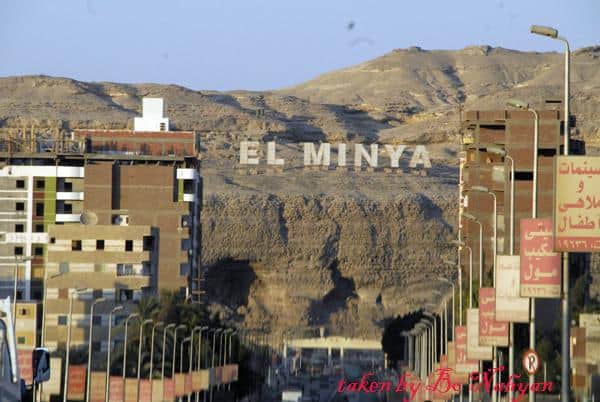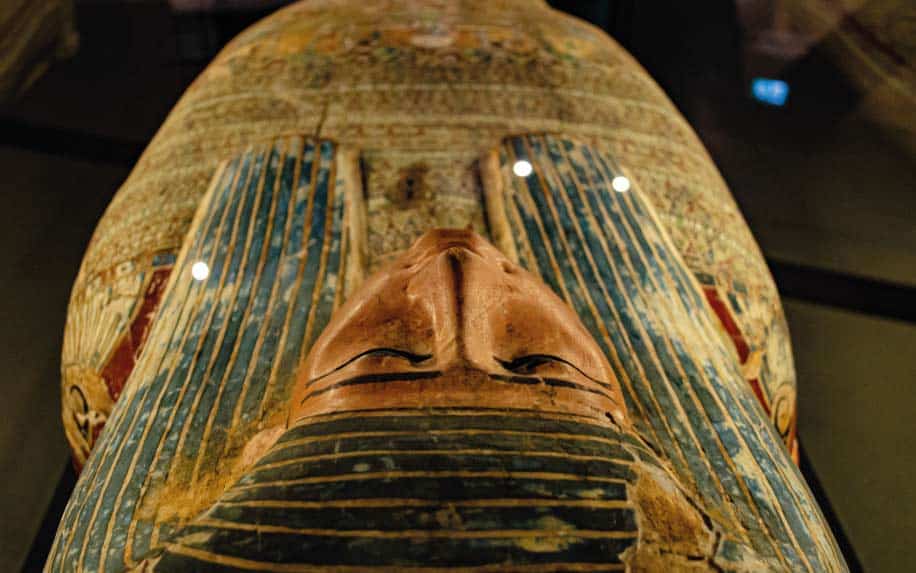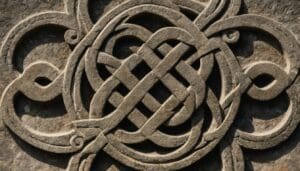El Minya: The Bride to Upper Egypt

Updated On: April 16, 2024 by Ciaran Connolly
Many archaeological sites in Egypt show us the succession of great civilizations through different historical eras, from the ancient Egyptian, Greco-Roman, Coptic and Islamic monuments to the antiquities of the modern era, the architectural and artistic designs are different between places of worship, tombs, obelisks, and palaces, each with its own distinctive character and aesthetics.
We invite you to discover Egypt from the masterpieces of archaeological sites of various eras, through the City of El Minya.
El Minya is one of the most important governorates of Upper Egypt, which has many ancient pharaonic and Islamic monuments that distinguish it from the rest of the country.
El Minya is the geographical and historical heart of Egypt in many ways. It is located along the Nile, 230 km outside Cairo, and this governorate had been the capital of Egypt for nearly 700 years.
There are many excavations in this city that serve important information about life in ancient Egypt, where many tombs and places of great tourist and archaeological value were discovered. It occupies the third place at the level of the Republic in terms of archaeological and tourist sites.
El Minya Governorate is characterized by the fact that it contains many historical monuments and places, from different eras, starting with the Pharaonic monuments and tombs, passing through the Coptic era and its historical churches and the journey of the Holy Family, and ending with the Islamic conquest. It is considered a museum and an ancient record of historical eras that passed through Egypt. Through the development of ancient civilizations, El Minya has become one of the most wonderful regions in Egypt.
Things to do in El Minya City
El Minya is filled with interesting attractions and sights for visiting tourists. In fact, it’s one of the best tourist cities in Egypt.
Here are a few of our highlights.
1- Banni Hassan Tombs:
If you want to visit one of the richest archaeological areas in Upper Egypt, then Banni Hassan is the right choice. It is an archaeological cemetery in El Minya that includes about 40 archaeological tombs from different eras. It is characterized by brightly coloured tombs, from the era of the old Kingdom to the Roman era.
Banni Hassan tombs are located about 20 kilometres south of the city of El Minya and it was dug in the mountain. The tombs of Banni Hassan were built on the eastern bank, which is unusual when it comes to the construction of Egyptian cemeteries, which were mostly built on the western bank of the Nile and there are two types of cemeteries; the upper zone tombs and the lower zone tombs.
This difference was based on the status of the deceased, since the rulers of the 15th region of Upper Egypt were buried there and it contains tombs of Khnumhotep II, Amenemhat, Beqat III, and Kheti. The walls are decorated with beautiful and brightly coloured, and it is a complete record of daily life in the era of the Middle Kingdom of Pharaonic history.
2- El-Amarna Hill
El-Amarna Hill was the city chosen by King Akhenaton and his wife Nefertiti to be the new capital of the Egyptian Kingdom in ancient Egypt. Egypt was ruled by it for nearly 17 years and it is located 45 kilometres south of the archaeological area of Banni Hassan. The most important thing that you can find there is a group of tombs, about 26 tombs carved in the rock, and one of these tombs was dedicated to the burials of the royal family.
El-Amarna Hill includes two groups of tombs; a northern group at the northern end of the city, and a southern group at the southern end of the city. These tombs are distinguished by their colourful wall paintings that depict life during the Aton religious revolution. The statue of Queen Nefertiti in the Berlin Museum is one of the most famous monuments discovered in Amarna Hill, Where it was found by German archaeologist Ludwig Borchart in 1912.
Tombs worth visiting are Haya, Ahmose, Banehs, Maho, and the A tomb. The prominent areas of El-Amarna Hill did not stop at the tombs, but we also find the great small temple of Aton, the northern and southern palace, and the city of workers, which made these areas of El-Amarna Hill the most important archaeological sites in the whole world and not only in El Minya because of the importance of the historical era that that city witnessed and what Akhenaton did to unite the deities.

3- Mallawi Museum
The museum was founded during the era of President Gamal Abd El Nasser in 1962 and is about 60 years old and it is located in Mallawi, south of El Minya City.
Mallawi Museum was established to preserve the heritage left to us by ancient Egyptians, it consists of two floors divided into 4 rooms containing antiquities of the Greek, Roman, Coptic, and Pharaonic eras, as well as vases containing mummies and coins used in the past for buying and selling. It also includes the coffins of some of the kings of Egypt for some eras, lecture halls, a laboratory for the restoration of antiquities and some of the antiquities of the Islamic era, and Middle Egypt. The museum includes 950 artifacts; and among the rare pieces in the museum is a statue of the daughter of King Akhenaton dating back to the era of the ancient Pharaonic state, and two statues of Ankh Bibi and his wife dating back to the era of the modern Pharaonic state.
4- Tuna El-Gebal
The Tuna El-Gebel area is one of the most important archaeological areas in El Minya city, but also in Egypt because of its history and it is located 18 km from the city of Mallawi in the western mountain in El Minya. It includes the largest cemetery called the Ashmounin City Cemetery.
Tuna El-Gebal includes the Roman water wheel, which is the largest water tank in the region and a masterpiece of Roman engineering, also includes the basement and called it the cemetery of the second spirits or the vaults of mystery and excitement, and it is the largest cemetery for birds and sacred animals dug into the desert. There is one of the paintings of the borders of Egypt during the reign of King Akhenaton.
Important discoveries were found in Tuna El-Gebel during 3 years, the first was in June of 2017, which was the discovery of mass human tombs in the Catacomb system, and 13 mummies in intact condition, stone coffins, and pottery utensils.
In February of 2018, the second discovery was 40 stone sarcophagi of priests with inscriptions, and in February 2019, the third discovery was 62 mummies were discovered, 40 of them are in good condition and ready to display, and there are 22 other mummies currently under restoration. In January 2020, the fourth discovery was 10,000 statues, more than 700 amulets, 8 sets of utensils of different shapes and colors, and 8 wooden coffins in great and well-preserved condition.
5- Akhenaton Museum
Akhenaton Museum is considered among the 3 largest archaeological museums in Egypt, next to the Grand Egyptian Museum and the Fustat Museum, and it is under construction. The museum displays the most important antiquities from a very important historical period of Akhenaton’s rule.
The museum is designed in the shape of a pyramid. It is consists of five floors, including 14 museum exhibition halls, a conference hall that can accommodate about 800 people, a school for teaching restoration works, an area for bazaars, an open theatre, and a river dock for cruise ships. It is located on an area of 25 acres directly on the Nile. The final phase of the construction of the Museum is going to be completed this year.

Narciso Arellano via Unsplash
6- The Leaning Minaret Mosque
The minaret of the ancient mosque is located between the residential block in the center of Samalut, whose walls were built with mud bricks.
It is an architectural masterpiece that shows the features of history. It is within the ancient mosque and it was built in 368 AH during the Fatimid era. The mosque was built on a large hill that reaches a height of 25 meters, and next to it is a minaret that exceeds 36 meters, and it is made up of several floors, each of them is 5 meters long and filled with geometric decorations, the minaret is more than 1,000 years old and the degree of inclination is almost 21 degrees.
It is still in good condition and does not have any cracks, this minaret is one of the materials of Islamic antiquities in Egypt, which confirms the ingenuity of engineering in the Fatimid era.
7- Al-Amrawi Mosque
The mosque is located at the entrance to the city of El Minya from the eastern desert road; it was built in 843 AH and it is an architectural masterpiece that is difficult to replicate in this city. The mosque was famous for 550 years as the Farewell Mosque, it was named as such because it was located a few meters from the Nile Bridge and it was used to cross to the eastern bank in order to bury the dead there. It consists of an open middle courtyard surrounded by 4 porticos, the largest of which is the qibla portico, and has extensions such as the minaret.
8- Monastery of Saint Abu Fana
Abu Fana Monastery is one of the oldest monasteries in Upper Egypt, affiliated with the Coptic Church. It is among the oldest monasteries in the world and it was constructed in the 4th century AD. The monastery is located in the Western Desert, about 300 km south of Cairo, and northwest of the city of Ashmounin.
This monastery was known by several titles, including Ava Fana or Ava Fini, which is the name of the founder of the monastery, the monk Ava Fini, and it is also known as Monastery of the Cross, and perhaps the reason for this name is the presence of many decorated crosses. The tomb of Abu Fana was found during excavations carried out by the Austrian Archaeological Institute in Cairo in 1992. The monastery includes an ancient church, which is one of the oldest ancient Coptic religious pulpits. It was established in the 6th century AD, and was built with mud bricks, and has an area of about 260 meters.
9- Monastery of the Blessed Virgin Mary
The Virgin Mary Monastery was built on the top of mountain Al Tair, and this mountain is close to the Nile River and is one of the largest and most important areas where the Holy Family stayed, where nearly 2 million visitors visit it during the celebrations of the visit of the Holy Family.
The monastery includes the Church of the Virgin Mary. It was built in the 4th century AD and is about 1600 years old. The church is carved in the rock, it is about 3 meters low from the surface of the earth, and it was built on the ancient Coptic Byzantine system that is the dome system, and it has more than 12 domes. It includes a group of icons dating back to the early Christian era. The church is known for having 3 structures, one is in the name of the Archangel Michael, the middle one is in the name of the Virgin, and the third is in the name of St Takla the Ethiopian.
10- Deir al Barsha Area
Deir al-Barsha is considered one of the villages of Mallawi in El Minya city which is located 40 km south of the city of El Minya and on the eastern bank of the Nile, in front of the city of Mallawi. It was used as a cemetery during the Middle Kingdom from 2055 till 1650 BC for the Ashmounin rulers, where the rulers built elaborately decorated tombs. The excavations in Deir al Barsha began in 1897 by the French archaeologist, George Darcy, and his most remarkable discovery is the third burial chamber of Spi lll, which was found intact and untouched. The Egyptian Museum in Tahrir presents a display of it called Life in Death.
The most famous cemetery of Deir al-Barsha is the tomb of Gahoti Hotop, the governor of the Ashmounin region, an important place too is the burial chamber of Spi III, who was the commander of the army during the reign of King Senusret.
11- Al Bahnasa City
Al Bahnasa City contains antiquities from different eras of Egyptian history. This village includes Pharaonic, Roman, and Islamic monuments, in addition to traces of modern history, represented in buildings and palaces dating back more than a hundred years. It is located in El Minya 16 km from the Banni Mazar city.
Among the historical monuments in it is the Mary tree and was named so because the Virgin Mary and Jesus Christ sat under it when they were on a trip to Upper Egypt. And the 17 mausoleum domes for the companions and righteous followers, such as the dome of the Seven Girls, and the shrine of Sidi Jaafar.
A unique tomb dating back to the Sawy era has been discovered, it consists of one chamber built of limestone. And eight tombs dating back to the Roman era were discovered, with vaulted ceilings and non-engraved ones, inside which were found many tombstones dating back to the Roman era, bronze coins, and small crosses.
12- Isadora Tomb Martyr of love
In Egypt, the most powerful love story took place in ancient Egypt thousands of years ago, a sad love story between Isadora, an Egyptian girl with Greek roots, and the Egyptian officer Habi. It was discovered by the Egyptian archaeologist Sami Gabra in 1931.
She is considered the Juliet of ancient Egypt, as she lived in the second century BC during the era of Emperor Hadrian, and her tomb is located in the Tuna al Jabal area, west of Mallawi City. She drowned while crossing the Nile to meet her lover, and her father lamented her with Greek poetry on the walls of the tomb. The tomb contains her remains embalmed and preserved inside a white roll in a tomb resembling a small temple. Isadora’s Tomb has become a world sanctuary for millions of foreign visitors, mostly Germans.
13- Petocres Tomb
Petocres Tomb dates back to the Ptolemaic era, and it is a tomb and a small temple at the same time. It was built in the year 300 BC, Petruses was the high priest of the god Thoth. It is located in El Minya city in the Tuna El-Gabal. The tomb bearing his name has a vestibule with columns and contains images in the ancient Egyptian and Greek cultures, where we see scenes of agricultural works.
In the tomb, the sarcophagus of Petziers was found, which was transferred to the Egyptian Museum as one of the important collectibles. This tomb is also distinguished by the interplay of Hellenic and Egyptian art, especially in the front compartment, where daily life and industries were painted.
Check out our other top places to visit on your trip to Egypt.






